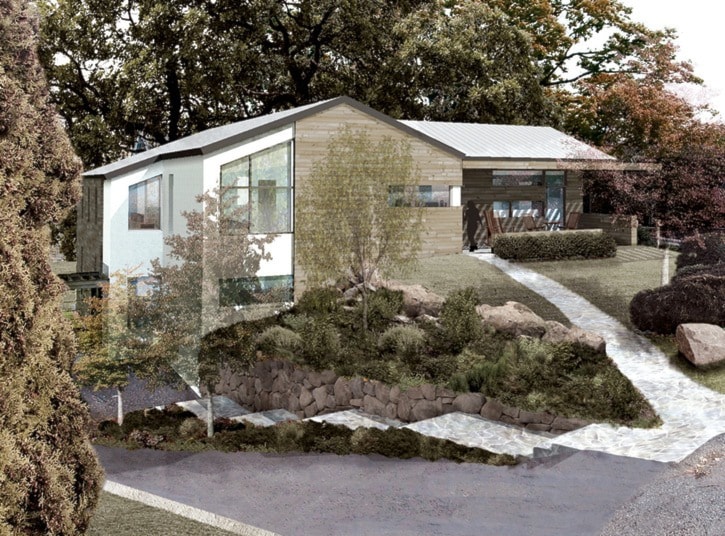It seemed all of Oak Crest Drive was in Saanich council chambers Monday night to see whether councillors would approve rezoning to build a duplex on their block.
Ultimately it was not OK'd, after a stream of residents took to the mike to oppose the unique residential development.
"I don't understand why they can't build a (single-family) house under the current bylaw," said area resident Susan Bellingham, summing up the sentiment of the majority of speakers.
The concern was that rezoning the large property at 1535 Oak Crest Dr. would set a precedent in the quiet neighbourhood, leading to more rezoning and the potential for monster homes on the big lots.
"I can see (approving this duplex) diminishing the sense of community and youthfulness in the area," said a teenaged Timothy Henderson, who recently moved in with his family.
His mom, Hayley, also spoke during the meeting. "(When you're new to a neighbourhood) you try to fit in, you don't try to impose," she said.
Applicant Mark Bernhardt said that while he was aware of opposition to his plans, he felt they merited approval.
"Obviously we're disappointed. It's unfortunate that this is now not a long-term option for my family," he said regarding council's rejection of the rezoning request. Bernhardt, 30, has a wife and two young kids – they planned to live in the larger, lower duplex suite. The upper suite would've been for his parents, designed to allow them to grow old in the home.
What neighbours did not disapprove of was the Bernhardts' unique environmental design for the home. It was to be built to International Passive House Standards, as the News wrote about in January.
A passive house takes advantage of sunlight, and uses such methods as increased insulation, installing high-quality goods and windows, and heat recovery ventilation to keep energy and utility bills incredibly low. A passive house is 80 to 90 per cent more efficient than a standard home.
"We're still going to build on the site and it will be a passive house," Bernhardt said after the meeting.
Councillors Leif Wergeland and Vic Derman were the two dissenting voices on council, voting instead to send the plans to public hearing.
Under existing zoning, a home that sticks out like a sore thumb could be built on that property without council ever getting a chance to put in their two cents.
"The advantages of a rezoning situation is council has maximum control," Derman said, attempting to quell neighbourhood concerns."We can exert controls (through restrictive covenants) and maximize the protection of the neighbourhood."
Coun. Paul Gerrard expressed concerns about building a duplex on a narrow street, right at a bend in the road. "Most successful duplexes are on a corner."
Mayor Frank Leonard said the application appeared, to him, to be one where the Bernhardts were trying to make the land-use fit with their environmental and social goals – not the other way around, as it should be.
"If you can't get the support of your immediate neighbours … you're wasting money on a lot of aspects of the building process."
kslavin@saanichnews.com
